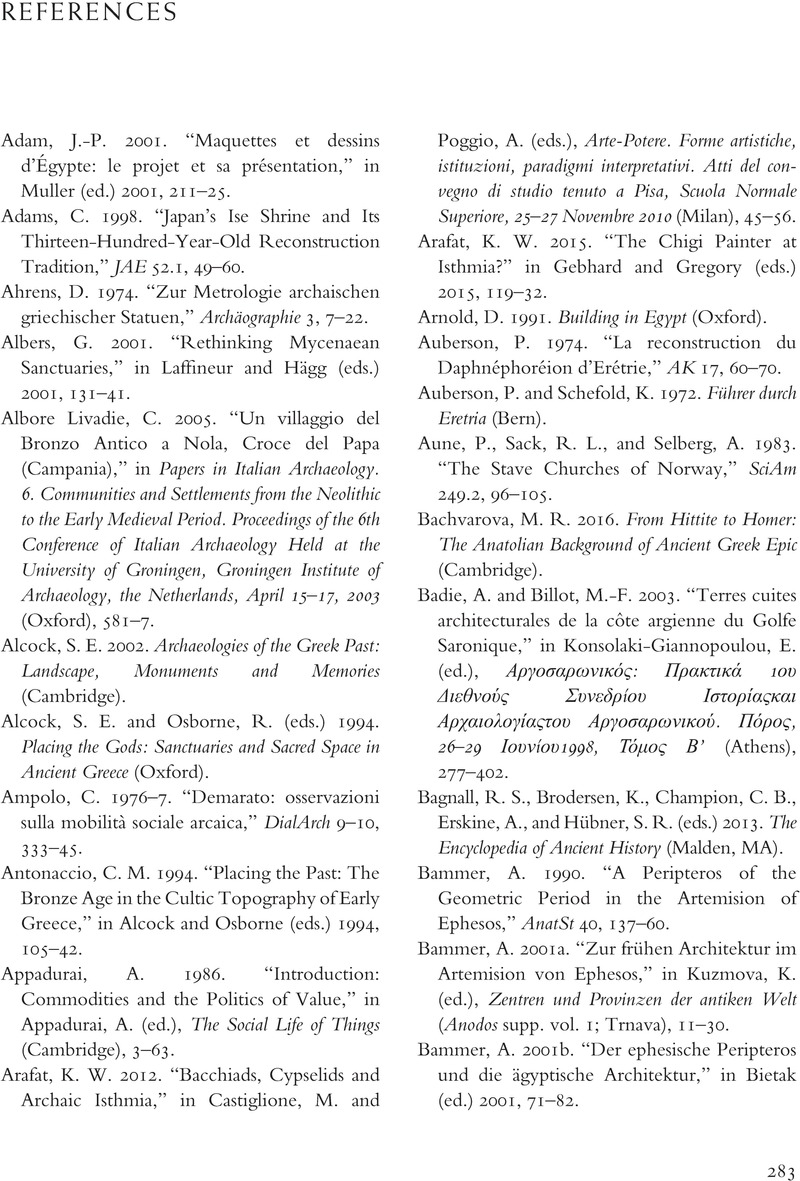Book contents
- The Origins of Greek Temple Architecture
- The Origins of Greek Temple Architecture
- Copyright page
- Dedication
- Contents
- Figures
- Tables
- Acknowledgments
- Abbreviations
- Introduction
- One Origins and Legacies
- Two The Rise of Monumental Temples
- Three Technological Innovation and Permanence
- Four Conclusion
- Appendices
- References
- Index
- References
References
Published online by Cambridge University Press: 09 September 2022
- The Origins of Greek Temple Architecture
- The Origins of Greek Temple Architecture
- Copyright page
- Dedication
- Contents
- Figures
- Tables
- Acknowledgments
- Abbreviations
- Introduction
- One Origins and Legacies
- Two The Rise of Monumental Temples
- Three Technological Innovation and Permanence
- Four Conclusion
- Appendices
- References
- Index
- References
Summary

- Type
- Chapter
- Information
- The Origins of Greek Temple Architecture , pp. 283 - 324Publisher: Cambridge University PressPrint publication year: 2022

